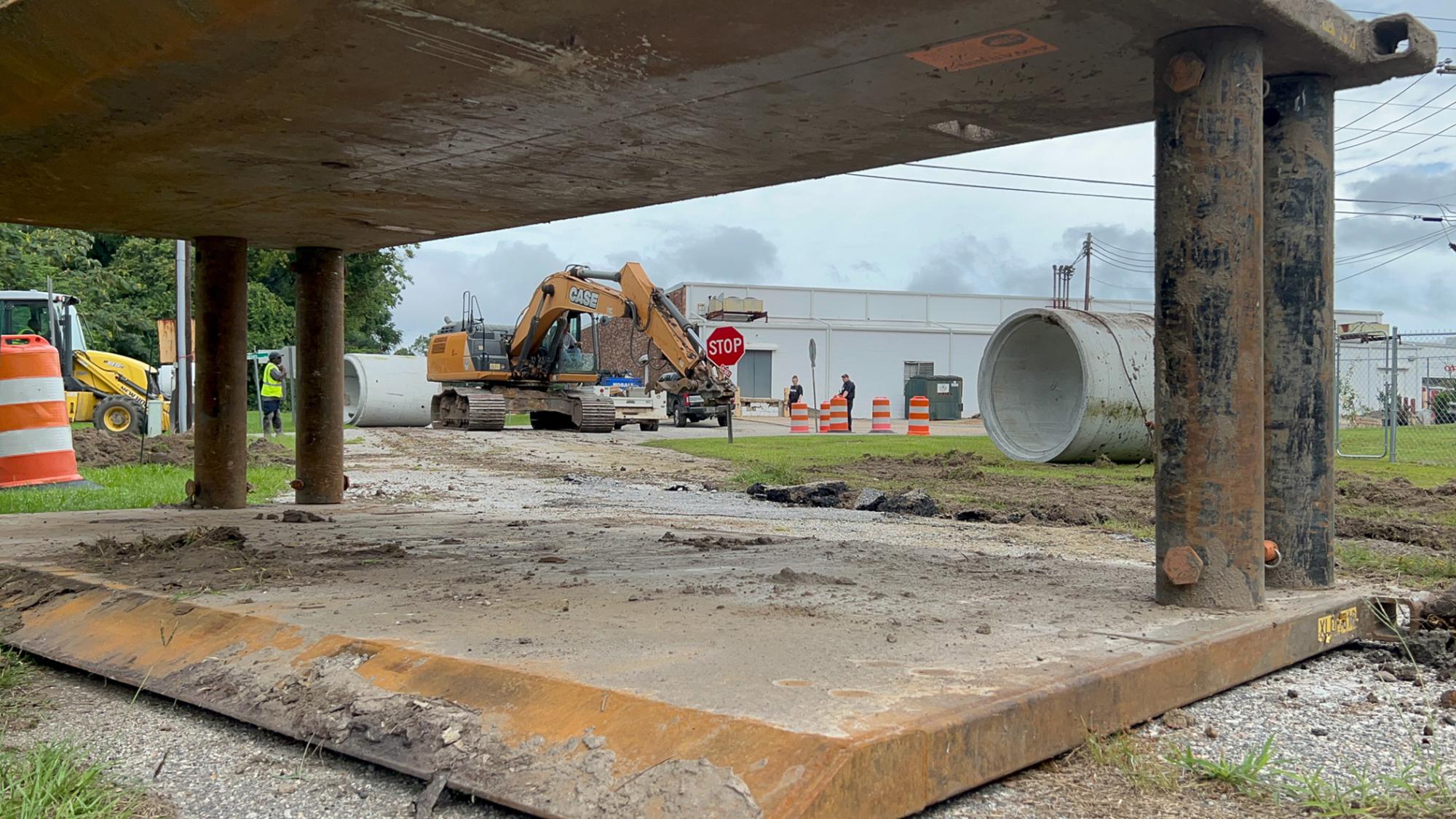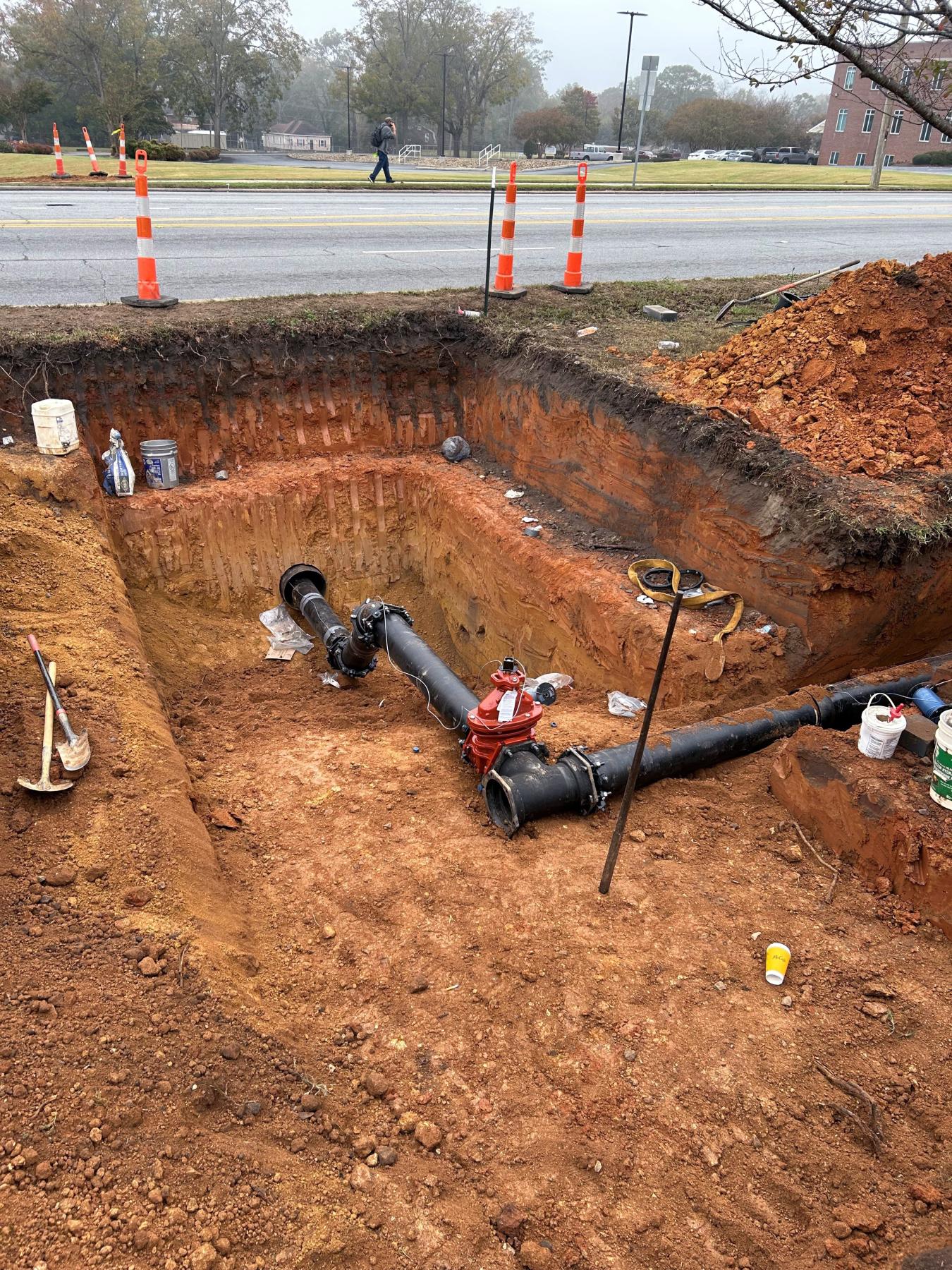As many South Carolina cities and towns look back over a long history of providing water and sewer service to residents, an important reality sets in — some of their pipes and lines are 100 years old, and in need of replacement.
New infrastructure can help avoid expensive, repeated repairs to utility lines across a wide swath of public roadways, private property and rights of way. Even so, replacing old lines often comes with a hefty price tag, so cities are turning to federal and state grants to finance this expensive work.
For the City of Bennettsville, which offers residents electricity, water, sewer and gas services, finding the outdated infrastructure was simply a matter of using historical maps to see where the original pipes were located.
“We took a two-tiered approach,” said City Administrator William C. Simon Jr. “We did secure the services of an engineering firm to assist us with this, but to bridge the gap a little bit faster, we took advantage of having personnel that have been working with the city for years. They just opened up lids and looked at the direction of the pipes and verified it on paper maps.”
As those locations are verified, the system is being mapped out digitally on GIS.
“Then our next step is our engineering firm coming in for some of those areas where we haven't identified a lot of the infrastructure,” Simon said. “They're going to help us put a camera down in some of the lines so that we can determine the direction of the pipes, and that's going to help us complete that system.”

Water line replacements in Bennettsville made use of SC Infrastructure
Investment Program funding. Photo: City of Bennettsville.
The water and sewer improvements in Bennettsville’s Broad Street and Lake Wallace areas as well as water line replacement in the Marlboro Street area are in part of the city that has low and moderate-income households.
The work is funded in part by a $10 million grant from the South Carolina Rural Infrastructure Authority through the South Carolina Infrastructure Investment Program. The grant also supports meter upgrades.
“This grant is a game-changer for us,” Simon said. “We are a small city with a declining population, and we have a large low to moderate-income population … Revenues coming into the city are sustained, but they're low. So the city just did not have the money to really replace this aging infrastructure.”
Simon said he expects the upgrades to be completed this year or early next year.
For Lake City, addressing its flooding issues caused in part by aging infrastructure is its largest public works project to date. The work encompasses 17 streets and 2.3 miles of piping.
To pay for the work, the city is using a $13.5 million grant from the U.S. Economic Development Administration, combined with a $1 million grant from the SC Rural Infrastructure Authority. The Acline Stormwater Drainage project will reduce recurring flooding in the downtown area that has caused structural damage to buildings.
“This has been going on for probably 25 years or more, and it's kind of putting Band-Aids on it to get by,” said Ricky Sims, public works director. “It's going to help the downtown area and a lot of residential areas. It’s the largest project that I know of that Lake City has ever had, as far as drainage.”

Lake City’s flooding mitigation efforts involved more than 2 miles of piping.
Photo: City of Lake City.
To help secure the grant, Mayor Yamekia Robinson and a group of constituents visited with U.S. Rep. Jim Clyburn to talk about the problems and possible federal assistance.
“This is my hometown,” Robinson said. “So I grew up seeing the different flooded areas for years, and I can go back and even talk about how my father grew up here as well, and seeing flooding in his area where he grew up.”
Getting elected officials on board for letters of support were helpful in getting the grants, Robinson said, as was hiring someone full-time to work on the grant applications.
“Doing this kind of thing without a grants professional is certainly possible,” said Lisa Jones, the city’s grant writer, “but there’s an advantage to having a grants professional work with you. They know where to find the money, and they can expedite getting the requests through and the administrative part.”
Jones said if towns cannot afford to hire someone specifically to write and manage grants, they can contract for the service or work, with organizations like the National League of Cities’ Local Infrastructure Hub or the granting entity itself to fill that role. South Carolina’s 10 Councils of Governments have also helped obtain and administer grants.
“The good news is funders want to fund projects so they will help you as much as they can,” she said.
Greenwood has taken a systematic approach to replacing its aging infrastructure.
The Greenwood Commissioners of Public Works, which runs the city’s water, electric and gas services, created an inventory of its water lines — some of which dated back to 1910 when the lines were installed by local textile mills.
“We've got a lot of systems that were installed by the mills early on, and then when they either went out of business or changed their structure, they handed it over to the water utility,” said Hope Walker, the utility’s engineering director. “The first thing that we did was to identify how much line do we have in each decade.”
That inventory showed about 5% of the city’s water infrastructure was installed before 1950.
“The next thing we did was look at kind of an average dollar per linear foot: How much is it going to cost to keep these lines less than 100 years old or less than 90 years old, whatever the goal may be, whatever the life of the material is?” she said.
The utility estimated maintenance on those lines would cost about $5 million a year, creating quite a financial incentive to replace the lines.

The Greenwood Commissioners of Public Works have been
replacing water lines as well as fire hydrants and gate valves.
Photo: Greenwood CPW.
“In about 2019, we started really looking at the age of the system and how do we keep our system less than 100 years old or less than 80 years old,” Walker said. “Where can we impact the most people and get the best bang for our buck?”
Using $10 million in grant funding from the SC Rural Infrastructure Authority, which had funds from the 2021 American Rescue Plan Act, and $4.4. million in local matching funds, the city set about replacing more than 5 miles of water mains and 110 water service connections, as well as fire hydrants and gate valves.
The project’s size threatened to overwhelm the CPW staff, but Utilities Engineer Jonathan Atkins was hired in 2022 to help design the projects in house.
“Definitely having the funds to work with, even though it stretches our resources here in house, allows us to get a lot done in a short period of time,” Atkins said.
